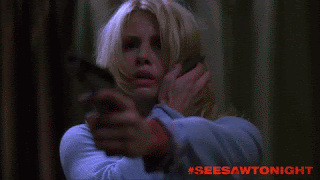In this studio session, we were taught the basic principles of filming. This included a number of things such as consistency, the “studio lingo” (such as Standby, Roll, Rolling, Action), the notion that ‘time is money’ and the 180 degree rule.
First of all, we were instructed that every scene should first be filmed with a wide-shot. The purpose of this was simply to ensure that the film’s narrative could continue should we happen to run out of time for whatever reason and be unable to shoot any close-ups; after all, there’s no use of having just a really cinematic shot of some shoes, for example, when it actually lends nothing to continuing the story. Once the wide-shot has been filmed, then we can worry about thematic close-ups and detail-specific shots…
This practise is closely related to the notion that time is money. Important scenes must be filmed first, and should never be re-watched whilst on set. Instead, we should simply just keep re-filming until we are confident that we have a good take. By re-watching our footage, we risk wasting time - which thus wastes money - and potentially has the capability of making the actors self-conscious upon seeing themselves, thus risking their reliability in future shots. As such, it is easier and more effective to just keep repeating the scene until we are sure that there is a good take amongst our expansive plethora of footage.
The 180 Degree Rule
|
An important rule was taught to us during the session: the 180 degree rule. This effectively means that when shooting a scene, all takes must be done on the same side of ‘the line’ (or more specifically, ‘the axis of action’). The purpose of this is to ensure that no matter the angle or perspective of the shot, the characters, or objects, will always be facing the same way; this is to give the audience a sense of geographical placing within the scene. For instance, when a football or rugby game is being filmed, all the cameras will be on the same side of the pitch to assure that when a change of shot occurs, the players will always still be going in the same direction, thus saving the spectators a lot of confusion.
In small groups, we attempted our own endeavours at filming a short scene following such basic principles. Likewise, with each take we made sure to use the correct lingo as a way of getting us into good practise.
In my group, we filmed someone walking on screen, checking their phone, and walking off. As instructed, we began with a wide-shot and after which delved further into re-doing some more peculiar, interesting shots - such as one over our actor’s shoulder so that we could see the messages on her phone.
Whilst we never got the chance to edit our footage, it was incredibly useful to be able to practise all the things we learnt in our previous studio lesson as well as to actually have the opportunity to film something. I was especially thankful for the pointers as to how to create the best shot as possible, such as filming at object-specific height, and the rule of thirds.










